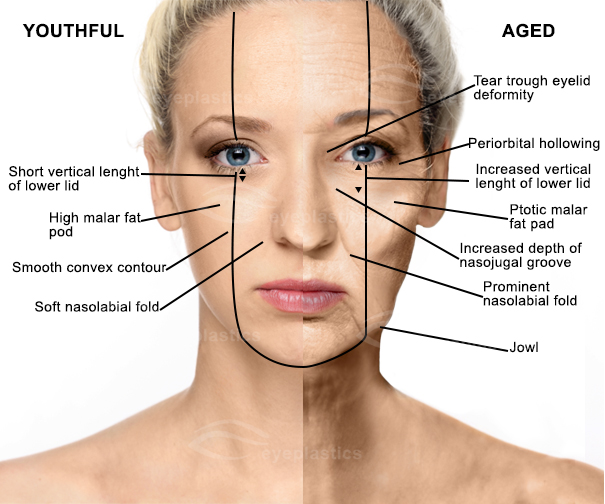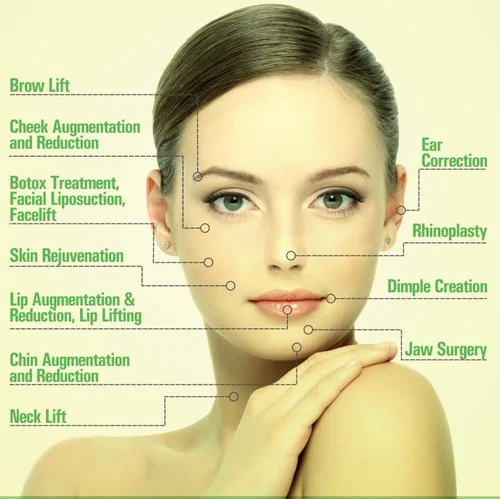Reconstructive facelift in Iran
Reconstructive facelift in Iran is a medical procedure aimed at restoring the normal appearance and function of the face after trauma, disease, congenital defects, or aging. Unlike cosmetic facelifts, which are performed to improve appearance and reduce signs of aging, reconstructive facelifts are typically necessary for medical reasons.
Here are some key points about reconstructive facelift in Iran :
Indications
Reconstructive facelift in Iran may be indicated for:
– Correction of facial paralysis (such as Bell’s palsy or after removal of a tumor).
– Reconstruction after trauma or burns.
– Correction of congenital defects (like cleft lip and palate).
– Restoration after surgical removal of skin cancer or other diseases.
Goals
The goals of reconstructive facelift in Iran often include:
– Restoring normal facial symmetry.
– Enabling functionality such as chewing, swallowing, and facial expression.
– Improving aesthetic appearance.
– Reconstructing the normal anatomic structure.
Techniques
Various techniques may be used depending on the specific case:
– Skin grafts and local flaps for resurfacing skin defects.
– Free tissue transfer (free flaps) for larger or more complex reconstructions.
– Static slings or dynamic muscle transfer for facial reanimation.
– Fat grafting or fillers to restore volume.
– Cartilage grafts or implants to support structural elements of the face.
Preoperative Considerations
– A thorough medical history and examination.
– Discussion of expectations and possible outcomes.
– Imaging studies may be required for planning the surgery.
– Coordination with a multidisciplinary team, including plastic surgeons, otolaryngologists, neurologists, and physical therapists, may be necessary.
Recovery
– Recovery time can vary widely based on the extent of the surgery.
– Patients may need to stay in the hospital for a few days post-operation.
– Swelling, bruising, and discomfort are common initially.
– Rehabilitation, including physical therapy, may be required to regain function.
Risks and Complications
Like all surgical procedures, reconstructive facelift in Iran carries risks, which may include:
– Infection.
– Scarring.
– Nerve damage.
– Asymmetry.
– Complications related to anesthesia.
Postoperative Care
– Follow-up appointments are critical to monitor healing and progress.
– Instructions on wound care and activity restrictions.
– Possible need for additional procedures for further refinement or correction.
Outcomes
– The success of reconstructive facelift in Iran depends on the individual case, the reason for the surgery, and the patient’s overall health.
– Some patients may achieve significant functional and aesthetic improvements, while others may require additional procedures for optimal results.
Patients considering reconstructive facelift in Iran should consult with a board-certified plastic surgeon or a facial reconstructive surgeon who specializes in these procedures. They can provide an individualized assessment and create a tailored treatment plan based on the patient’s specific needs and goals.
Cost of reconstructive facelift in Iran
(deep face and neck lift surgery)
- The cost of reconstructive facelift in Iran is between 3000 to 5000 euros
- Usually one night stay in the hospital is considered
- If you are not a resident of Tehran, the duration of stay in Tehran is 9 days
The cost of reconstructive facelift in Iran |
3000 euros |
including surgeon + hospital fee | |
| Other costs related to face and neck lift surgery in Tehran | |||
| Cost of blood test | Between 10 and 15 euros | The difference depends on the type of blood test | |
| The cost of consultation with a cardiologist | Between 20 and 40 euros | For people over 40 or heart patients | |
| The cost of medicine and other health items | Between 10 and 20 euros | ||
| The cost of face and neck lift plastic surgery – optional | |||
| Nurse fee (per night) | 30 euros | If you are traveling alone | |
| The cost of changing the dressing by the nurse | |||
Attention:
- If you have an underlying disease or medication, let us know
- If you have already had facial surgery, the cost of the surgery will increase slightly
- Let us know if you have anemia or other blood disorders
If you want to operate in Tehran, Dr Hessami, click the button below and follow the stepsStart your therapeutic journey

Reason for reconstructive facelift in Iran
Reconstructive facelift in Iran can be performed for a variety of reasons, which are generally related to restoring the form and function of the face due to abnormalities caused by various factors. Here are some common reasons for undergoing reconstructive facelift in Iran :
1. Congenital Defects: Patients born with facial abnormalities, such as cleft lip and palate or craniofacial syndromes, may require reconstructive surgery to improve function and appearance.
2. Trauma: Facial injuries from accidents, such as fractures and lacerations, can lead to disfigurement that necessitates reconstructive procedures to restore normal appearance and function.
3. Cancer Resection: Following the removal of facial tumors or skin cancer, reconstructive surgery may be necessary to rebuild the areas of the face affected by the surgery.
4. Burns: Significant scarring and contractures from burns can lead to functional impairment and disfigurement, which reconstructive surgery aims to correct.
5. Facial Paralysis: Conditions like Bell’s palsy or the effects of a stroke can cause facial paralysis. Reconstructive surgery may involve procedures to restore symmetry and function to the affected side of the face.
6. Infection or Disease: Certain infections or diseases can cause tissue loss or scarring. Reconstructive facelifts can help repair and restore these areas.
7. Aging: In some cases, reconstructive surgery may be used to correct age-related issues that have led to functional problems, such as vision obstruction due to drooping eyelids, although this often overlaps with cosmetic procedures.
8. Revision Surgery: Sometimes, previous surgeries may not achieve the desired outcome, or complications may arise, necessitating further reconstructive work.
The specific reason for reconstructive facelift in Iran will dictate the approach, techniques used, and the overall treatment plan. It is also important to note that reconstructive surgery is typically considered medically necessary and, as such, may be covered by health insurance, in contrast to cosmetic surgery, which is usually elective and not covered.
Type of reconstructive facelift in Iran
Reconstructive facelift in Iran encompasses various types and techniques, each tailored to address specific issues and anatomical areas of the face. Here are some types of reconstructive facelift procedures:
Skin Grafts and Flaps
– Skin Grafts: Transplanting skin from one area of the body to another to cover a defect or wound.
– Local Flaps: Using adjacent tissue that is still attached to its blood supply to cover a nearby defect.
– Regional and Distant Flaps: Moving tissue from a different part of the body, which may be required for more extensive reconstruction.
Facial Reanimation Surgery
For patients with facial paralysis, surgery can help restore movement:
– Static Sling Procedures: Using grafts or synthetic materials to provide support to droopy facial features.
– Dynamic Muscle Transfer: Transplanting muscles from other parts of the body to restore movement.
– Nerve Grafts and Transfers: Reconnecting or replacing damaged facial nerves to restore function.
Microvascular Free Flap Reconstruction
This advanced technique involves transplanting tissue along with its blood supply (artery and vein) from one part of the body to the face, reestablishing circulation by microsurgical connection of the vessels.
Volume Restoration
– Fat Grafting: Harvesting fat from another part of the body and injecting it into the face to restore volume lost due to aging, disease, or trauma.
– Dermal Fillers: Using injectable materials to restore facial volume, though this may be more common in cosmetic procedures.
Bone Reconstruction
– Bone Grafting: Taking bone from one area (like the hip or rib) and using it to reconstruct facial bones.
– Distraction Osteogenesis: Gradually growing new bone by slowly pulling apart segments of existing bone, allowing new bone to fill in the gap.
– Custom Implants: Creating and placing custom-made implants to reconstruct the facial skeleton.
Reconstructive Rhinoplasty
Rebuilding the nose structure after injury, cancer resection, or to correct congenital defects.
Oculoplastic Surgery
Procedures focused on the eyelids and orbit, which may include:
– Blepharoplasty: To correct drooping eyelids that may impair vision.
– Orbital Reconstruction: To rebuild the eye socket after trauma or tumor removal.
Ear Reconstruction
For congenital defects like microtia or after trauma or cancer surgery, using rib cartilage or prosthetic materials.
Scar Revision and Laser Surgery
Improving the appearance of scars, using various techniques to make them less noticeable.
Each of these procedures requires a thorough assessment and a highly individualized surgical plan. The choice of the specific type of reconstructive facelift surgery depends on the patient’s unique situation, including the cause of the deformity, the patient’s health and preferences, and the surgeon’s expertise. These surgeries can be complex and may involve a team of specialists to achieve the best functional and aesthetic outcome.
Why is reconstructive facelift in Iran difficult than the first procedure
Reconstructive facelift in Iran can be more difficult than the initial or primary surgery for several reasons. Here are some of the challenges that surgeons may face during reconstructive procedures:
1. Scar Tissue: Previous surgeries leave scar tissue, which is less pliable than normal tissue. This can make dissection more challenging and can affect healing and the final aesthetic result.
2. Altered Anatomy: The normal anatomical landmarks may have been changed or obscured during the prior procedure, making it harder for the surgeon to navigate during reconstruction.
3. Limited Tissue Availability: The initial surgery may have used or removed significant amounts of tissue, leaving less available for reconstruction. This may necessitate the use of grafts or flaps from other body areas.
4. Compromised Blood Supply: Prior surgery can compromise the blood supply to the area, increasing the risk of complications such as poor healing or tissue necrosis.
5. Patient Healing and Response: Each patient’s body reacts differently to surgery, and the healing process from the first surgery can influence the outcomes of any subsequent procedures.
6. Increased Complexity: Reconstructive surgery often addresses more complex problems, such as restoring function to paralyzed facial muscles or rebuilding structures that were removed or damaged.
7. Higher Risk of Complications: Because the surgery may be longer and more intricate, there is an increased risk of complications like infection, bleeding, or nerve damage.
8. Managing Expectations: Patients who have undergone previous surgeries may have higher expectations, and it can be a challenge to achieve the desired results given the limitations imposed by prior procedures.
9. Technical Skill Required: Reconstructive facelift in Iran often requires advanced surgical techniques and a higher level of precision due to the altered and more delicate surgical field.
For these reasons, reconstructive facelift surgeries are typically more time-consuming, require a higher level of surgical expertise, and often involve a multidisciplinary approach to manage both the functional and aesthetic aspects of the reconstruction. It’s crucial for the surgeon to have a detailed preoperative plan and to communicate clearly with the patient about the realistic outcomes and potential risks involved in a secondary or reconstructive procedure.

